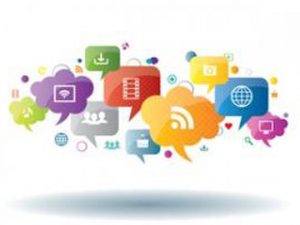
The HIV.gov team helps our partners in the HIV community start or expand their digital communication activities and increase the reach of their HIV programs. We have been offering digital technical assistance for almost 10 years. Here are a few of our recent activities:
- We recently held two social media labs at the Circle of Harmony HIV/AIDS Wellness Exit Disclaimer Conference (April 19-21, 2017) and at SYNChronicity 2017 Exit Disclaimer (April 24-25, 2017) both of which provided opportunities for in-person, one-on-one, social media technical assistance.
- This past month, we also presented in the Circle of Harmony HIV/AIDS Wellness Conference “Social Media Technical Assistance Webinar” which was held on March 28th, 2017 in advance of the April conference. Read more about this event below.
- In addition, we hold ongoing HIV.gov's Virtual Office Hours to get one-on-one technical assistance.
Lessons Learned: Circle of Harmony Webinar
The Circle of Harmony HIV/AIDS Wellness Conference “Social Media Technical Assistance Webinar” was held in advance of the conference. The goal of the webinar was to provide insights into how social media can be used to support in-person events at the conference and to reach individuals who could not attend the conference. It reached over 50 listening sites from across the nation.
According to Ayn Whyte, STD/HIV/AIDS Prevention Program Manager at the Albuquerque Area Indian Health Board, who co-hosted the webinar and co-organized the conference with Capacity Building Specialist Kurt Begaye:“I believe that having as many approaches to reaching our communities is important. Not everyone seeks or receives information the same. It also is an opportunity for our young people who have an enormous amount technological knowledge to lead us into the next era of prevention.”Here are some highlights from the presentation:
- Social media offers several benefits for adding more value to your event. If you’re planning a conference, consider how you can use these channels to create buzz, build connections to the event among participants, and build interest in your messages beyond your usual network. To do this consider some of the following possible action steps:
- Knowing your place on the “crawl, walk, run, fly continuum Exit Disclaimer” (assessing where your organization is in terms of your current social media practice) can help organizers and attendees prepare for effective communication for a specific in-person event.
- Planning for event-related conversations on social media should include effective hashtag selection, careful listening and a focus on authentic sharing of content.
- During your event, use social media to foster conversations among participants and individuals who are following along remotely. Consider live tweeting high-profile presentations, sharing behind-the-scenes photos and videos, and posting share quotes from participants.
- Throwbacks, photos, and summaries are just a few ways to extend visibility and conversation beyond the event.
The TA webinar concluded with a question and answer period with many wide-ranging, technical questions about social media. If you weren’t able to attend, the webinar recording (with slides) is now available Exit Disclaimer.
To Learn More About Social Media
We believe that helping our partners in the HIV community will help us all achieve greater success in addressing the HIV epidemic. If there’s something we can help you with, don’t forget that HIV.gov’s Virtual Office Hours is a year-round source of free personalized assistance in using social media for HIV-related communication.